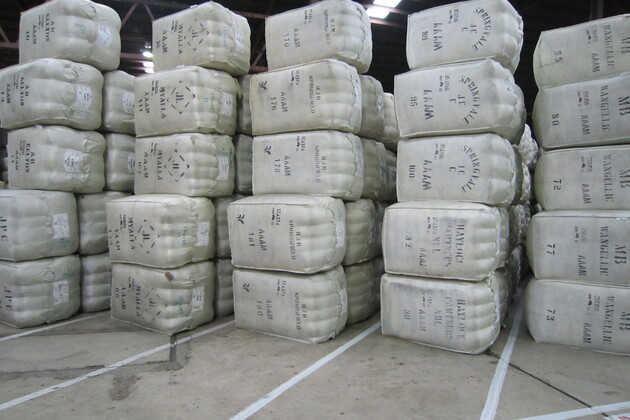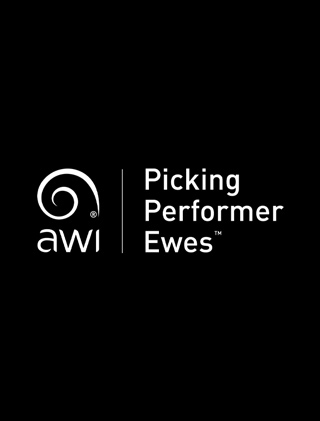<h4>SECTION 1: BACKGROUND INFO</h4>
<p><strong>1. Does your business have an emergency animal disease (EAD) preparedness plan?</strong></p>
<p style="padding-top: 5px;"><span class="text-primary"><strong>Why is this important? </strong></span> An EAD preparedness plan potentially reduces the consequences for a wool business of an EAD event, should one occur.</p>
<p><span style="color: #ff0000;"><strong>Recommendation: </strong>Your business should complete an EAD preparedness plan using the FAWO-endorsed template.</span></p>
<p><strong>2. Is training provided to staff on emergency animal diseases preparedness?</strong></p>
<p style="padding-top: 5px;"><span class="text-primary"><strong>Why is this important? </strong></span> Staff training is an integral part of business EAD preparedness. Training should include details of the operational response, impact on the business and the role of staff in the response. This will improve the resilience and adaptability of your business.</p>
<p><span style="color: #ff0000;"><strong>Recommendation: </strong>You should consider providing staff with EAD preparedness training.</span></p>
<p><strong>3. Is training provided to staff on biosecurity risk and mitigation?</strong></p>
<p style="padding-top: 5px;"><span class="text-primary"><strong>Why is this important? </strong></span> Biosecurity is integral to managing the risk of a facility to contamination with an infectious agent. A high standard of biosecurity is also a fundamental requirement during an EAD response for the business to return to trade.</p>
<p><span style="color: #ff0000;"><strong>Recommendation: </strong>Your business should ensure all its staff are made aware of biosecurity risks relevant to the business type and that they are trained in measures to reduce that risk.</span></p>
<p><strong>4. Is training provided to staff on the risk of zoonotic diseases associated with wool handling?</strong></p>
<p style="padding-top: 5px;"><span class="text-primary"><strong>Why is this important? </strong></span> Zoonotic disease is a real risk for people handling animals, animal products and animal by-products.</p>
<p><span style="color: #ff0000;"><strong>Recommendation:</strong> Employees of this business who are exposed to greasy wool should be made aware of the zoonotic risks associated with handling wool.</span></p>
<p><strong>5. Is training on the use of personal protective equipment provided to staff?</strong></p>
<p style="padding-top: 5px;"><span class="text-primary"><strong>Why is this important? </strong></span> Personal protective equipment in combination with other measures helps to protect workers from zoonotic hazards.</p>
<p><span style="color: #ff0000;"><strong>Recommendation: </strong>In consultation with a human health expert, staff should be trained in the correct selection and use of personal protective equipment and the situations where its use is recommended.</span></p>
<h5 class="text-primary">SECTION 2: LOCATION RISKS</h5>
<p><strong>1. Does your business share its premises with another business?</strong></p>
<p style="padding-top: 5px;"><span class="text-primary"><strong>Why is this important? </strong></span> If the wool business was declared an 'Infected Premises' during an EAD outbreak, the movement of all goods from the other business/s sharing the premises might be impacted. The reverse is also true. This risk is heightened if the other business involves animals or plants or their products or by-products. This decision would be made by the government authority managing the disease response.</p>
<p><span style="color: #ff0000;"><strong>Recommendation: </strong>The business should weigh up the benefits of sharing the premises with another business against the risks that would arise in the case of an EAD event.</span></p>
<p><strong>2. Does your business conduct other activities from the same premises as the wool enterprise?</strong></p>
<p style="padding-top: 5px;"><span class="text-primary"><strong>Why is this important? </strong></span> If the wool business was declared an 'Infected Premises' during an EAD outbreak, the movement of all goods from the other enterprise/s sharing the premises might be impacted. The reverse is also true. This risk is heightened if the other enterprise involves animals or plants or their products or by-products. This decision would be made by the government authority managing the disease response.</p>
<p><span style="color: #ff0000;"><strong>Recommendation:</strong>The business should weigh up the benefits of of having more than one enterprise at the same location against the risks that would arise in the case of an EAD event.</span></p>
<p><strong>3. Are there livestock on your premises, or on the property immediately adjacent to the premises?</strong></p>
<p style="padding-top: 5px;"><span class="text-primary"><strong>Why is this important? </strong></span> If there are livestock on the premises or on the property immediately adjacent to the premises, your facility would not be able to receive wool that might be contaminated in the event of an EAD outbreak. If those livestock were to become infected, your facility might be classified as an Infected Premises.</p>
<p><span style="color: #ff0000;"><strong>Recommendation: </strong>No livestock should be kept on the premises where a wool handling facility is located.</span></p>
<p><strong>4. Is there an animal feed manufacturing business located within 200m of your facility?</strong></p>
<p style="padding-top: 5px;"><span class="text-primary"><strong>Why is this important? </strong></span> If either the wool or the feed facility were to become an Infected Premises then contamination of the adjacent business may occur.</p>
<p><span style="color: #ff0000;"><strong>Recommendation: </strong>During EAD preparedness planning the business should consider the increase in risk associated with the close proximity of this business.</span></p>
<p><strong>5. Is there a meat processing plant located within 200m of the facility?</strong></p>
<p style="padding-top: 5px;"><span class="text-primary"><strong>Why is this important? </strong></span> If either the wool or meat processing facility were to become an Infected Premises then contamination of the adjacent business may occur.</p>
<p><span style="color: #ff0000;"><strong>Recommendation: </strong>During EAD preparedness planning you business should consider the increase in risk associated with the close proximity of this business.</span></p>
<p><strong>6. Are there any waterways (lakes, rivers, dams etc), or any private residences, located within 200m of your facility?</strong></p>
<p style="padding-top: 5px;"><span class="text-primary"><strong>Why is this important? </strong></span> The presence of a waterway or a residence close to the facility would be an important consideration if decontamination were required in an EAD event, as a large amount of waste water and disinfectant would be generated. Advice from the EPA will ensure the environmental impacts from the water effluent are minimised.</p>
<p><span style="color: #ff0000;"><strong>Recommendation: </strong>You should plan for appropriate disposal of the large amount of waste water that would be generated by the decontamination process during an EAD response should one occur. This planning should be done in consultation with the EPA.</span></p>
<p><strong>7. Is it possible to access the facility via main roads, avoiding rural roads?</strong></p>
<p style="padding-top: 5px;"><span class="text-primary"><strong>Why is this important? </strong></span> Having an access route to the facility that avoids rural areas is part of EAD planning and preparedness. This is of particular relevance if the facility becomes located within the Restricted Area or Control Area of an EAD outbreak and you are seeking to be classified as an 'Approved Processing Facility'.</p>
<p><span style="color: #ff0000;"><strong>Recommendation: </strong>If possible, you should identify a road route to the facility that avoids rural areas.</span></p>
<p><strong>8. Does your business have a procedure to control the access of companion animals (cats, dogs) into the facility?</strong></p>
<p style="padding-top: 5px;"><span class="text-primary"><strong>Why is this important? </strong></span> Animals can physically transfer infectious agents between different areas. Under the emergency response biosecurity measures that would need to be implemented during an EAD event, companion animals would need to be prevented from accessing an area where wool has been isolated.</p>
<p><span style="color: #ff0000;"><strong>Recommendation: </strong>The business should develop cat and dog containment plans that could be implemented immediately or in the event of an EAD.</span></p>
<p><strong>9. Does your business have a procedure for rodent control?</strong></p>
<p style="padding-top: 5px;"><span class="text-primary"><strong>Why is this important? </strong></span> Rodents can physically transfer infectious agents between different areas. Under the emergency response biosecurity measures that would need to be implemented during an EAD event, rodents would need to be prevented from accessing an area where wool has been isolated.</p>
<p><span style="color: #ff0000;"><strong>Recommendation: </strong>The business should have a rodent control procedure in place at all times.</span></p>
<p><strong>10. Does your business have a bird management procedure within the building/s?</strong></p>
<p style="padding-top: 5px;"><span class="text-primary"><strong>Why is this important? </strong></span> Birds can physically transfer infectious agents between different areas. Under the emergency response biosecurity measures that would need to be implemented during an EAD event, birds would need to be prevented from accessing an area where wool has been isolated.</p>
<p><span style="color: #ff0000;"><strong>Recommendation: </strong>Your business should secure its premises to keep birds out.</span></p>
<p><strong>11. If your facility has several different buildings, do any of these share a common airspace?</strong></p>
<p style="padding-top: 5px;"><span class="text-primary"><strong>Why is this important? </strong></span> If the facility were to become classified as an Infected Premises in an EAD outbreak, wool might need to be isolated in an area that is free from wind or air movements that could spread infectious material. If this cannot be avoided then the outside of all wool bales would need to be decontaminated before isolation.</p>
<p><span style="color: #ff0000;"><strong>Recommendation: </strong>In the case of an EAD event, you may be required to identify a potential site for the isolation of wool that does not have a common airspace (from wind, draughts, heating or cooling) with the wool handling area.</span></p>
<h5 class="text-primary">SECTION 3: FACILITY PROCEDURE RISKS</h5>
<p><strong>1. Is wool that is to be delivered to your facility booked in prior to arrival by phone, email or internet?</strong></p>
<p style="padding-top: 5px;"><span class="text-primary"><strong>Why is this important? </strong></span> Prior booking of wool consignments allows for an appropriate biosecurity risk assessment to be made prior to wool arriving. This would be particularly important in an EAD event and would be a requirement under the emergency response biosecurity measures that would need to be implemented.</p>
<p><span style="color: #ff0000;"><strong>Recommendation: </strong>Your business should implement a procedure by which all incoming wool is booked in prior to dispatch.</span></p>
<p><strong>2. Is sufficient information provided, when a wool delivery is booked in, to determine the biosecurity risk of the wool?</strong></p>
<p style="padding-top: 5px;"><span class="text-primary"><strong>Why is this important? </strong></span> It is important to make a biosecurity risk assessment prior to accepting wool. This risk assessment can only be made effectively if adequate information is collected from the consignee. This would be particularly important in an EAD event and would be a requirement under the emergency response biosecurity measures that would need to be implemented.</p>
<p><span style="color: #ff0000;"><strong>Recommendation: </strong>Your business should implement a procedure for collecting adequate information about a consignment to allow for a biosecurity risk assessment prior to the wool arriving at the facility.</span></p>
<p><strong>3. In the event wool arrives at the facility without being booked in previously, can the wool be unloaded into a quarantine area until the origin of the wool can be determined and checked?</strong></p>
<p style="padding-top: 5px;"><span class="text-primary"><strong>Why is this important? </strong></span> During an EAD response no wool should enter the main facility until its origin and biosecurity status has been verified.</p>
<p><span style="color: #ff0000;"><strong>Recommendation: </strong>Your business should implement a procedure to turn away, or unload into a quarantine area, consignments of wool whose origin cannot be immediately verified.</span></p>
<p><strong>4. Does each consignment of wool arrive with all the appropriate paperwork?</strong></p>
<p style="padding-top: 5px;"><span class="text-primary"><strong>Why is this important? </strong></span> Incomplete or inaccurate paperwork will limit the capacity to trace wool and perform a biosecurity assessment. The provision of complete paperwork would be a requirement under the emergency response biosecurity measures. This would include the classer's specification and national wool declaration.</p>
<p><span style="color: #ff0000;"><strong>Recommendation: </strong>Your business should implement a procedure by which paperwork is checked on arrival to ensure all necessary documents are present and have been completed properly.</span></p>
<p><strong>5. Are the details of each consignment of wool entered into the computer on arrival?</strong></p>
<p style="padding-top: 5px;"><span class="text-primary"><strong>Why is this important? </strong></span> Incomplete details will limit your capacity to trace wool and perform a biosecurity assessment. Details should include the type and quantity of wool as well as the property of origin, the owner of the wool and the PIC.</p>
<p><span style="color: #ff0000;"><strong>Recommendation: </strong>Your business should have procedures in place to ensure the details of all consignments of wool are entered in the business computer system on arrival.</span></p>
<p><strong>6. Is the Property Identification Code (PIC) for the property of origin of the wool recorded on the computer?</strong></p>
<p style="padding-top: 5px;"><span class="text-primary"><strong>Why is this important? </strong></span> In the event of an EAD, state government authorities will 'declare' the status of properties (e.g. 'Infected Premises') based on their PICs. Tracing will be much easier for businesses that have PICs recorded on their computer system.</p>
<p><span style="color: #ff0000;"><strong>Recommendation: </strong>Your business should record the PIC of each consignment of wool into your IT system on arrival.</span></p>
<p><strong>7. Does the facility have the ability to search its database by PIC?</strong></p>
<p style="padding-top: 5px;"><span class="text-primary"><strong>Why is this important? </strong></span> In an EAD event, disease authorities will rely heavily on PICs to trace animals and animal products. The ability to search by PIC will greatly improve the efficiency of tracing wool.</p>
<p><span style="color: #ff0000;"><strong>Recommendation: </strong>Your business should have the ability to search wool consignments by their PIC.</span></p>
<p><strong>8. Is a biosecurity risk assessment completed on every consignment of wool before it is unloaded?</strong></p>
<p style="padding-top: 5px;"><span class="text-primary"><strong>Why is this important? </strong></span> Conducting a biosecurity risk assessment for every consignment of wool received is a vital step in managing the biosecurity risk of wool inputs.</p>
<p><span style="color: #ff0000;"><strong>Recommendation: </strong>Your business should implement a procedure by which a biosecurity risk assessment is completed for each load of wool that arrives at the premises before it is unloaded.</span></p>
<p><strong>9. If wool is ever received outside business hours, is someone present to receive it and perform a biosecurity risk assessment?</strong></p>
<p style="padding-top: 5px;"><span class="text-primary"><strong>Why is this important? </strong></span> Biosecurity risk assessment of all wool consignments is essential. Under the emergency response biosecurity measures, wool can only be received at any time when there are adequate staff and infrastructure available to complete a biosecurity assessment.</p>
<p><span style="color: #ff0000;"><strong>Recommendation: </strong>Your business should not receive wool outside business hours unless staff are present to receive it and complete the normal biosecurity risk assessment.</span></p>
<p><strong>10. Does the facility have a procedure that ensures all visitors (deliveries, couriers, buyers,<br />growers etc) to the facility report directly to a single point (e.g. reception, office)?</strong></p>
<p style="padding-top: 5px;"><span class="text-primary"><strong>Why is this important? </strong></span> This would be a requirement under the emergency animal biosecurity measures, but is also recommended as a routine procedure.</p>
<p><span style="color: #ff0000;"><strong>Recommendation: </strong>The business should implement a procedure by which all arrivals (including visitors, couriers, contractors, growers and buyers) first report to a central point at the facility.</span></p>
<p><strong>11. Can all wool that enters and leaves the facility be fully traced?</strong></p>
<p style="padding-top: 5px;"><span class="text-primary"><strong>Why is this important? </strong></span> Maintaining traceability of wool within the facility is good biosecurity practice. In an EAD event if contaminated wool is traced to the facility authorities might want to trace the movement of that wool beyond arrival at the facility. This might include movement onto another facility.</p>
<p><span style="color: #ff0000;"><strong>Recommendation: </strong>The business should implement systems that facilitate the tracing of wool from arrival to dispatch.</span></p>
<p><strong>12. Do transport vehicles stop within the facility?</strong></p>
<p style="padding-top: 5px;"><span class="text-primary"><strong>Why is this important? </strong></span> Vehicles are a considerable biosecurity risk, especially vehicles that have been on farm to collect wool. It is best practice to not allow vehicles into the wool handling area. This would not be permitted under the emergency response biosecurity measures.</p>
<p><span style="color: #ff0000;"><strong>Recommendation: </strong>The business should plan to exclude all transport vehicles from entering the facility at any time if this is required.</span></p>
<p><strong>13. Are any wool sales within the facility conducted in an area separate to the wool area?</strong></p>
<p style="padding-top: 5px;"><span class="text-primary"><strong>Why is this important? </strong></span> Visitors to a facility create a biosecurity risk. The risk is increased when those visitors include growers who come directly from their farms in their farm work boots.</p>
<p><span style="color: #ff0000;"><strong>Recommendation: </strong>The business should have a defined area for wool sales that is separate from the wool handling and storage areas. Visitors to sales should be excluded from the wool area by having a dedicated sale area with its own entrance.</span></p>
<p><strong>14. Does the business have a procedure to record all contact details for all visitors to the facility?</strong></p>
<p style="padding-top: 5px;"><span class="text-primary"><strong>Why is this important? </strong></span> Details of visitors may be required for traceability purposes. In an EAD event, recording visitor details would be a requirement under the emergency response biosecurity measures.</p>
<p><span style="color: #ff0000;"><strong>Recommendation: </strong>The business should record, for each visitor, the visitor's name and business (purpose of visit), area within the facility to be visited, biosecurity risk rating and contact details.</span></p>
<p><strong>15. Does the business have a procedure to record all staff training?</strong></p>
<p style="padding-top: 5px;"><span class="text-primary"><strong>Why is this important? </strong></span> Details of any staff training undertaken may be useful to demonstrate the business's EAD preparedness.</p>
<p><span style="color: #ff0000;"><strong>Recommendation: </strong>The business should record all staff training.</span></p>
<p><strong>16. Does the business have a procedure to record all movements of machines and tools onto and away from the facility?</strong></p>
<p style="padding-top: 5px;"><span class="text-primary"><strong>Why is this important? </strong></span> Details of equipment movements may be required for traceability purposes. In an EAD event, recording equipment movements would be a requirement under the emergency response biosecurity measures.</p>
<p><span style="color: #ff0000;"><strong>Recommendation: </strong>The business should record all movements of machinery and tools onto and off the facility.</span></p>
<p><strong>17. Does the business have a procedure to assess the biosecurity risk of machines/vehicles?</strong></p>
<p style="padding-top: 5px;"><span class="text-primary"><strong>Why is this important? </strong></span> In the event of an EAD, there will be a need to perform biosecurity risk assessments on all equipment moving in or out of the facility or between areas within the facility. This would be a requirement under the emergency biosecurity response measures.</p>
<p><span style="color: #ff0000;"><strong>Recommendation: </strong>The business should develop procedures for biosecurity risk assessment of all machines or vehicles in the case of an EAD event.</span></p>
<p><strong>18. Does the business have a procedure to assess the biosecurity risk of staff?</strong></p>
<p style="padding-top: 5px;"><span class="text-primary"><strong>Why is this important? </strong></span> In the event of an EAD, there will be a need to perform biosecurity risk assessments on all staff. This would be a requirement under the emergency biosecurity response measures.</p>
<p><span style="color: #ff0000;"><strong>Recommendation: </strong>The business should complete a biosecurity risk assessment of all staff and renew this regularly.</span></p>
<p><strong>19. Does the business have a procedure to assess the biosecurity risk of visitors?</strong></p>
<p style="padding-top: 5px;"><span class="text-primary"><strong>Why is this important? </strong></span> In the event of an EAD, there will be a need to perform biosecurity risk assessments on all visitors. This would be a requirement under the emergency biosecurity response measures.</p>
<p><span style="color: #ff0000;"><strong>Recommendation: </strong>The business should develop procedures for biosecurity risk assessment of all visitors in the case of an EAD event.</span></p>
<h5 class="text-primary">SECTION 4: STAFF RISKS</h5>
<p><strong>1.Does the business have staff that move between different enterprises or different premises?</strong></p>
<p style="padding-top: 5px;"><span class="text-primary"><strong>Why is this important? </strong></span> During an EAD event, staff would be allocated to work in a single enterprise and premises. Movement between enterprises or premises would only occur with strict biosecurity measures. If the enterprises are inseparable then they would be treated as one in regards to an EAD response.</p>
<p><span style="color: #ff0000;"><strong>Recommendation: </strong>The business should plan to allocate staff to a single enterprise and premises in the case of an EAD event or develop appropriate measures (such as clothing changes or showering) to manage the biosecurity risk of staff movements.</span></p>
<p><strong>2. Do staff move between the wool and non-wool (e.g. office) areas within a facility?</strong></p>
<p style="padding-top: 5px;"><span class="text-primary"><strong>Why is this important? </strong></span> Under the emergency response biosecurity measures, there would be a clear demarcation of roles in the wool and non-wool areas. Staff would only be able to move between these areas with strict decontamination procedures.</p>
<p><span style="color: #ff0000;"><strong>Recommendation: </strong>The business should divide the enterprise physically into wool and non-wool areas, with movement between the two subject to decontamination measures.</span></p>
<p><strong>3. Do any of the staff who work in the business have livestock at their home, or do they have contact with livestock?</strong></p>
<p style="padding-top: 5px;"><span class="text-primary"><strong>Why is this important? </strong></span> Under the emergency response biosecurity measures, staff who come into contact with livestock will be given a job in the non-wool area until the facility has undergone isolation and decontamination procedures. After that time all staff working in the wool area will wear specific clothing in the wool area and only in the wool area.</p>
<p><span style="color: #ff0000;"><strong>Recommendation: </strong>The business should plan how it will deploy staff who have ongoing contact with livestock in the case of an EAD event. These staff may be restricted to duties in the non-wool area.</span></p>
<p><strong>4. Do staff wear specific work clothes, i.e. clothes that are either provided or allocated for the sole purpose of wearing for work?</strong></p>
<p style="padding-top: 5px;"><span class="text-primary"><strong>Why is this important? </strong></span> It is good biosecurity practice to provide specific work clothes. During an EAD event, this practice allows more flexibility in the allocation of roles. It would be required for staff in the wool area under the emergency response biosecurity measures.</p>
<p><span style="color: #ff0000;"><strong>Recommendation: </strong>The business should plan to provide work-specific clothing including shoes for staff working in the wool area in the event of an EAD event.</span></p>
<h5 class="text-primary">SECTION 5: OTHER RISKS</h5>
<p><strong>1. Are any of the vehicles/machines used at one premises also used at another premises?</strong></p>
<p style="padding-top: 5px;"><span class="text-primary"><strong>Why is this important? </strong></span> In an EAD event, movement of machines or tools between premises will not be permitted. If this cannot be avoided then the equipment would be required to undergo a strict decontamination process.</p>
<p><span style="color: #ff0000;"><strong>Recommendation: </strong>The business should develop procedures for assessing the biosecurity risk of equipment moving between premises and decontaminating it as required in the case of an EAD event.</span></p>
<p><strong>2. Are all bales of wool received at the facility closed correctly?</strong></p>
<p style="padding-top: 5px;"><span class="text-primary"><strong>Why is this important? </strong></span> Loose wool or bales that are open pose an increased biosecurity threat because of the wool's exposure to environmental contamination. Under the emergency response biosecurity measures, loose wool would not be allowed to be received by the facility.</p>
<p><span style="color: #ff0000;"><strong>Recommendation: </strong>The business should be prepared to receive only wool that is sealed within a bale in the case of an EAD event.</span></p>
<p><strong>3. Are all wool bales received by the business properly labelled?</strong></p>
<p style="padding-top: 5px;"><span class="text-primary"><strong>Why is this important? </strong></span> Correct labelling of bales is an essential part of good biosecurity. It constitutes the first and most obvious step in traceability.</p>
<p><span style="color: #ff0000;"><strong>Recommendation: </strong>The business should implement a procedure to ensure that only bales that are correctly labelled are received.</span></p>
<p><strong>4. Are skins or hides received at the facility?</strong></p>
<p style="padding-top: 5px;"><span class="text-primary"><strong>Why is this important? </strong></span> Skins and hides pose a biosecurity risk and given their relatively low value compared to wool they might be destroyed if they became contaminated during an EAD. Under the emergency response biosecurity measures, hides and skins would not be allowed to be received by the facility.</p>
<p><span style="color: #ff0000;"><strong>Recommendation: </strong>The business should be prepared to not receive skins or hides during an EAD event.</span></p>
<p><strong>5. Are wool samples that are collected for testing despatched according to the recommendations by AWTA?</strong></p>
<p style="padding-top: 5px;"><span class="text-primary"><strong>Why is this important? </strong></span> The transportation of wool via the post or couriers poses a biosecurity risk. Following AWTA recommendations would be a requirement under the emergency response biosecurity measures (and these requirements may change as directed by the authority in charge).</p>
<p><span style="color: #ff0000;"><strong>Recommendation: </strong>The business should have a procedure to ensure that all transportation of wool or wool samples complies with the relevant legislation.</span></p>
<p><strong>6. Do visitors or staff park their vehicles within the wool area?</strong></p>
<p style="padding-top: 5px;"><span class="text-primary"><strong>Why is this important? </strong></span> Vehicles are a biosecurity risk. Vehicles that travel through rural areas pose an even higher risk, especially those with mud contamination. During an EAD it would be a requirement under the emergency response biosecurity measures that non-essential vehicles not be driven into the wool area.</p>
<p><span style="color: #ff0000;"><strong>Recommendation: </strong>The business should develop a procedure to ensure that non-essential vehicles are not allowed to enter the wool area.</span></p>
<h5 class="text-primary">To receive your biosecurity risk assessment results and recommendations, please complete your details below:</h5>
Send My Results
















